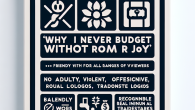
Why I’m OK Missing Out on ‘Hot Stocks’
How to Start Investing with Just $100: A Beginner’s Guide to Financial Freedom
So, you’ve got $100 burning a hole in your pocket—and no, I don’t mean another night of overpriced takeout and underwhelming wine. I mean real, intentional, grown-up investing. Yes, you can start investing even if your bank account doesn’t exactly scream “Wall Street.” In fact, I’d argue that starting small builds stronger financial habits that compound over time—just like your money will. Welcome to the smart girl (or guy) guide to getting your dollars to hustle for you.
Why $100 Is More Than You Think
Let’s bust a myth right off the bat: You do not need thousands of dollars to become an investor. Gone are the days of needing a hedge fund, a trust fund, or even a decent suit. Modern technology and financial innovation have cleaned house, and now everyday people—yes, even people with just $100—can put their money to work.
But what’s even more important than the amount you start with is the habit you’re building. Investing is less about a get-rich-quick scheme and more about a long-term relationship—like a good marriage, only with fewer arguments and more compounding interest.
What Are Your Financial Goals?
Before you jump into the world of ETFs, stocks, and robo-advisors, take five minutes (okay, maybe ten) to reflect. Ask yourself:
- What do I want my money to do for me?
- Am I saving up for early retirement, a house, or future world domination?
- How soon will I need this money back?
- What’s my risk tolerance—can I watch my money dip a little without hurling my phone across the room?
Understanding your personal goals is the compass that will guide your investment decisions. You don’t need a perfect plan, but you do need direction. Otherwise, you’re just throwing darts in the dark—and we’re aiming for bulls-eye returns here.
Step-by-Step: How to Start Investing with $100
1. Kill Your Debt (If It’s High-Interest)
Before we even whisper the word “stock,” let’s play defense. If you have high-interest debt—think credit cards charging 15% or more—take a serious look at paying that down first. Why? Because no investment will consistently earn you more than what you’re paying in interest each month. Paying off debt with that $100 could be your highest return on investment.
2. Choose Your Investment Vehicle
Okay, now that we’ve cleared the way, let’s break down where your $100 can go.
- Robo-Advisors: Platforms like Betterment, Wealthfront, or SoFi Invest use algorithms to manage your money based on your risk tolerance and goals. Most have zero or low minimum investment requirements.
- Micro-Investing Apps: Think of Acorns or Stash. These apps let you invest with pocket change and grow over time. They’re especially user-friendly for beginners and ideal for small starts.
- Online Brokers: Platforms like Fidelity, Charles Schwab, and Robinhood allow you to buy individual stocks, ETFs, or mutual funds with little to no commission.
- High-Yield Savings + CDs: If investing feels too risky, a high-yield savings account or short-term CD might be a more conservative way to grow your $100 while maintaining access to it.
My advice? Don’t overthink it. Pick a platform that aligns with your comfort level and offers educational support along the way. Remember, you’re not making a forever decision—you’re just making a first decision.
3. Diversify, Even on a Budget
I know what you’re thinking: “Rachel, how do I diversify with $100?” Easy! You don’t need to pick five different stocks or write a thesis on emerging markets. This is where ETFs (Exchange-Traded Funds) and index funds come in. They give you exposure to hundreds of companies in a single share—talk about bang for your buck.
For example, an ETF tracking the S&P 500 gives you tiny slices of Apple, Amazon, Google, and plenty more, all in one go. Plus, the fees (called expense ratios) are super low, which is great for small amounts of capital.
4. Automate, Automate, Automate
Life gets busy. Trust me, I’ve tried to juggle a budget, a job, and three episodes of a Netflix drama at once—it’s not sustainable. Automating your investments guarantees consistency. Most apps and brokers let you set up recurring deposits—even $25/month counts! Set it, forget it, and let compound interest handle the rest.
5. Keep Learning—but Don’t Get Stuck in Analysis Paralysis
I see so many people sit on the sidelines because they’re waiting until they “know enough.” Here’s the secret: you learn by doing. Stay curious. Read books and blogs (like this one ), follow trusted voices in finance, and track your progress. But don’t wait until you’ve read every finance book at the library to make a move. Action beats perfection every time.
Common Mistakes to Avoid
Even the best investors mess up, especially when emotions get involved. Here are a few rookie mistakes you’ll want to sidestep:
- Timing the market: No one can predict highs and lows consistently—not even Warren Buffett. Invest regularly, regardless of market noise.
- All eggs, one basket: Don’t throw your entire $100 into that one trending stock TikTok can’t stop talking about.
- Panic selling: Watching your investment drop and pulling out immediately only locks in your losses. Take a breath. Markets recover.
The Power of Starting Now
Let’s do some real talk math (I promise, no scary equations). Say you invest $100 and continue adding just $25/month. At an average return of 8% annually, you’d have about $9,700 in 10 years. That’s without needing a raise or even skipping Starbucks. But more important than the number is this: You’ve become an investor. That identity shift will unlock so many more financial wins to come.
Final Word from Rachel
Starting with $100 won’t make you a millionaire overnight—but it will give you momentum, and that’s everything. No matter how small, every dollar you invest is a vote for your future freedom. So stop scrolling. Stop doubting. Start doing.
Want to learn more? Check out our About Us page to see more of what we do with money around here—or get in touch on our Contact Us page if you have questions. I’d love to hear from you.
Until next time, keep stacking.
—Rachel









Leave a Reply